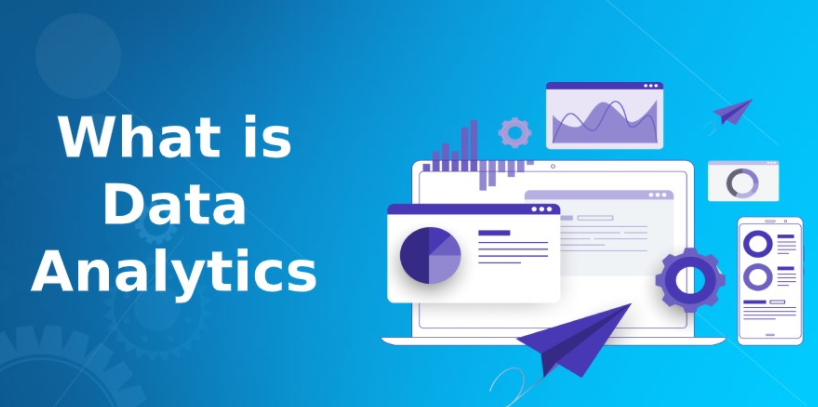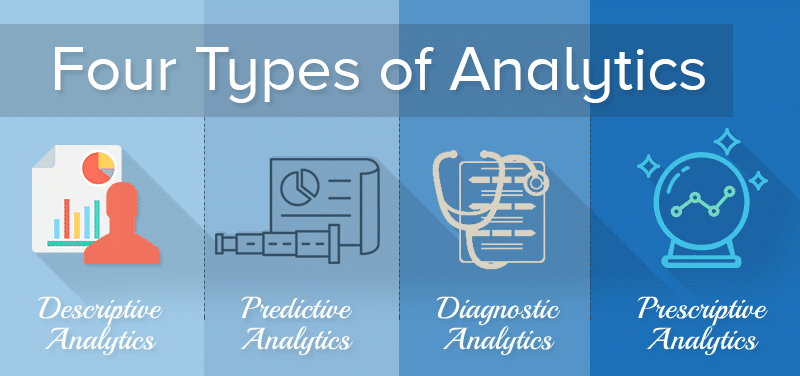BTOES From Home - SPEAKER ...
Courtesy of Nintex Pty's Paul Hsu, below is a transcript of his speaking session on 'Improve employee productivity during and post-COVID by ...
Data analytics is the science of analyzing raw data in order to make conclusions about that information. Many of the techniques and processes of data analytics have been automated into mechanical processes and algorithms that work over raw data for human consumption.

Data analytics is a broad term that encompasses many diverse types of data analysis. Any type of information can be subjected to data analytics techniques to get insight that can be used to improve things.
For example, manufacturing companies often record the runtime, downtime, and work queue for various machines and then analyze the data to better plan the workloads so the machines operate closer to peak capacity.
Data analytics can do much more than point out bottlenecks in production. Gaming companies use data analytics to set reward schedules for players that keep the majority of players active in the game. Content companies use many of the same data analytics to keep you clicking, watching, or re-organizing content to get another view or another click.
The process involved in data analysis involves several different steps:
Data has the potential to provide a lot of value to businesses, but to unlock that value, you need the analytics component. Analysis techniques give businesses access to insights that can help them to improve their performance. It can help you improve your knowledge of your customers, ad campaigns, budget and more.
As the importance of data analytics in the business world increases, it becomes more critical that your company understand how to implement it. Some benefits of data analytics include:
Companies can use the insights they gain from data analytics to inform their decisions, leading to better outcomes.
Data analytics eliminates much of the guesswork from planning marketing campaigns, choosing what content to create, developing products and more. It gives you a 360-degree view of your customers, which means you understand them more fully, enabling you to better meet their needs. Plus, with modern data analytics technology, you can continuously collect and analyze new data to update your understanding as conditions change.
When you understand your audience better, you can market to them more effectively. Data analytics also gives you useful insights into how your campaigns are performing so that you can fine-tune them for optimal outcomes.
Using the Lotame Campaign Analytics tool, you can gain insights into which audience segments are most likely to interact with a campaign and convert. You can use this information to adjust your targeting criteria either manually or through automation, or use it to develop different messaging and creative for different segments. Improving your targeting results in more conversions and less ad waste.
Data analytics provide you with more insights into your customers, allowing you to tailor customer service to their needs, provide more personalization and build stronger relationships with them.
Your data can reveal information about your customers’ communications preferences, their interests, their concerns and more. Having a central location for this data also ensures that your whole customer service team, as well as your sales and marketing teams, are on the same page.
Data analytics can help you streamline your processes, save money and boost your bottom line. When you have an improved understanding of what your audience wants, you waste less time on creating ads and content that don’t match your audience’s interests.
This means less money wasted as well as improved results from your campaigns and content strategies. In addition to reducing your costs, analytics can also boost your revenue through increased conversions, ad revenue or subscriptions.
By collecting various kinds of data from numerous sources, you can gain insights into your audiences and campaigns that help you improve your targeting and better predict future customer behavior.
One valuable type of data is information about customer behaviors. This refers to data about specific actions that a user takes. They might, for instance, click on an ad, make a purchase, comment on a news article or like a social media post.
This and other types of data can reveal information about customer affinities — expressed or suggested interest in activities, products, brands and topics. A customer may express interest in your brand by signing up for your email list. They may also indirectly express interest in a topic by reading about it on your website. They may express interest in a product by clicking on one of your ads for it. Some other potential sources of customer affinity data include survey responses, social media likes and video views.
By combining this data with information about your current customers’ demographics, you can gain insights into the customer segments that are most likely to be interested in your brand, content or products. Demographic information includes information about customers’ ages, genders, income, marital status and various other characteristics. For example, you might find, through data analytics, that people between the ages of 18 and 35 are the most likely to purchase your product. You might also find that people who are married make up most of your website’s audience. By targeting multiple characteristics, you can create more specific audiences who are highly likely to convert.
You can then use this information to predict the behaviors of various types of users and target your ads and content more effectively.

Data analytics is broken down into four basic types.
View our schedule of industry leading free to attend virtual conferences.
Each a premier gathering of industry thought leaders and experts sharing key solutions to current challenges.
Watch On-Demand Recording - Access all sessions from progressive thought leaders free of charge
from our industry leading virtual conferences.
The premier Business Transformation & Operational Excellence Conference. Watch sessions on-demand for free.
Use code: BFH1120
Delivered by the industry's most progressive thought leaders from the world's top brands.
Start learning today!
Welcome to BTOES Insights, the content portal for Business Transformation & Operational Excellence opinions, reports & news.
Insights from the most progressive thought leaders delivered to your inbox.
Insights from the world's foremost thought leaders delivered to your inbox.
Being a hero is all about creating value for others. Please invite up to 5 people in your network to attend this premier virtual conference, and they will receive an invitation to attend.
If it’s easier for you, please enter your email address below, and click the button, and we will send you the invitation email that you can forward to relevant people in your network.
View our schedule of industry leading free to attend virtual conferences. Each a premier gathering of industry thought leaders and experts sharing key solutions to current challenges.
View Schedule of EventsWatch On-Demand Recording - Access all sessions from progressive thought leaders free of charge from our industry leading virtual conferences.
Watch On-Demand Recordings For FreeDelivered by the industry's most progressive thought leaders from the world's top brands. Start learning today!
View All Courses NowThe premier Business Transformation & Operational Excellence Conference. Watch sessions on-demand for free. Use code: BFH1120
Watch On-DemandInsights from the most progressive thought leaders delivered to your inbox.
Insights from the world's foremost thought leaders delivered to your inbox.
Being a hero is all about creating value for others. Please invite up to 5 people in your network to also access our newsletter. They will receive an invitation and an option to subscribe.
If it’s easier for you, please enter your email address below, and click the button, and we will send you the invitation email that you can forward to relevant people in your network.
Courtesy of Nintex Pty's Paul Hsu, below is a transcript of his speaking session on 'Improve employee productivity during and post-COVID by ...
Read this article about HP, Best Achievement in Operational Excellence to deliver Digital Transformation, selected by the independent judging panel, ...
Read this article about BMO Financial Group, one of our finalists, in the category Best Achievement in Operational Excellence to deliver Digital ...
Read this article about Cisco, one of our finalists, in the category Best Achievement of Operational Excellence in Internet, Education, Media & ...
50 Grosvenor Hill. London W1K 3QT.
United Kingdom.
Copyright 2023 Proqis®